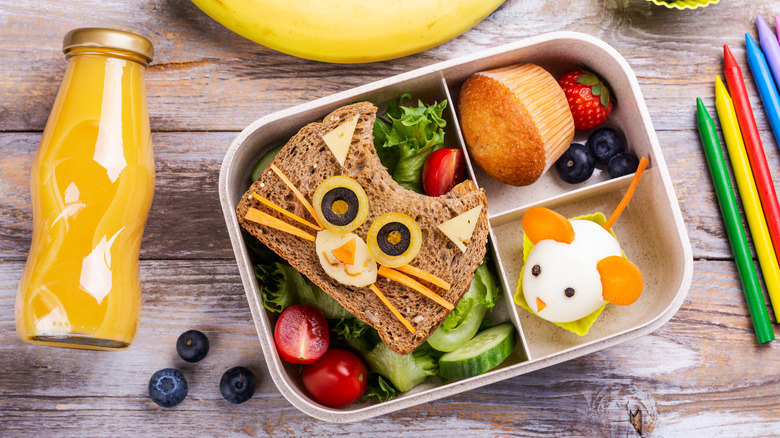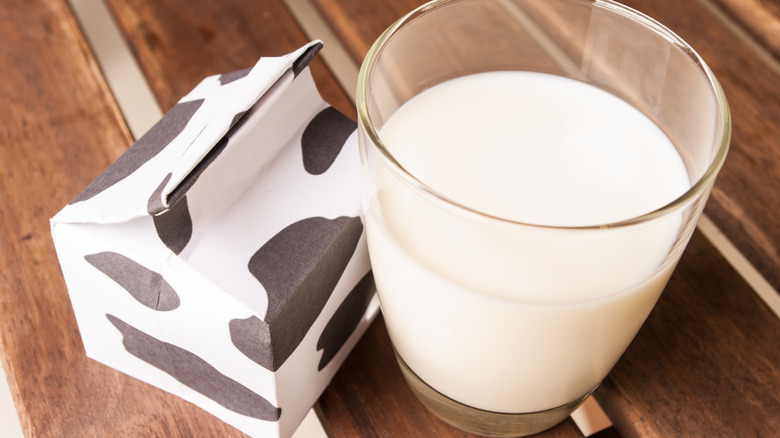The Real Reason School Lunches Come With Milk
School lunches have given America some fantastic pop culture references over the years, like Chris Farley's Lunch Lady Land and Chef from "South Park." However, providing energy and nutrition to children as they attend school is something a lot of people — from parents, to school administrators, and government regulators — take very seriously. Milk is a part of that conversation now and has been for decades.
Greater governmental involvement in the food that kids eat at school started after World War II, according to The Takeout. In 1946, the United States government enacted a law that created a national program for school lunches that, among other things, reduced the cost of meals that would be served to students during the day. This approach was echoed earlier in 2022 in a major change to school lunches that will stretch families' food budgets.
By 1947, over seven million children had improved access to lunch while attending school, according to the National Dairy Council. How schools started milking those programs quite literally includes even more historical context.
When the government started asking: Got milk?
The inclusion of milk in the government's school lunch program was yet another consequence of the Great Depression that lasted from 1929 to 1939 (via History). Due to the economic hard times, many soldiers in World War II "had grown up malnourished" (per The Takeout). Including milk in school lunches in the 1940s was viewed as a way to ensure that didn't happen with another generation of Americans, as The Takeout explained.
The subsidies for milk in school lunches continue today. However, that doesn't mean the inclusion of milk is stuck in time. In August 2022, nearly 30 organizations asked the National School Lunch Program to expand its reimbursement to include soy milk, according to The Hill. The groups stated that confining the subsidies to dairy milk only is discriminatory because "children of color are more likely to be lactose intolerant." Whether families include dairy milk or dairy alternatives in children's lunches, they should read this before they buy a lunch box for a child to ensure they're purchasing and packing everything correctly.
All in all, the story of how milk became a fixture of school lunches is just about the government wanting to ensure that future generations of Americans grew up with better nutrition. That's an idea worth a song from Chef on "South Park."

